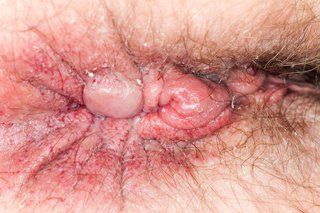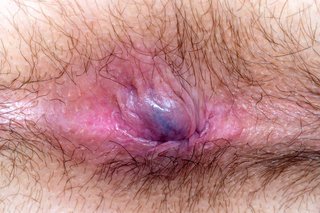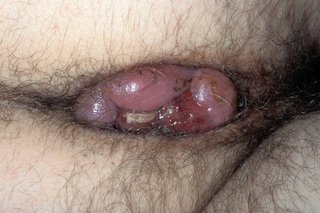Piles (haemorrhoids) are lumps inside and around your bottom (anus). They often get better on their own after a few days. There are things you can do to treat and prevent piles.
Check if it's piles
Symptoms of piles include:
- bright red blood after you poo
- an itchy anus
- feeling like you still need to poo after going to the toilet
- mucus in your underwear or on toilet paper after wiping your bottom
- lumps around your anus
- pain around your anus
See what piles look like



How you can treat or prevent piles
Do
-
drink lots of fluid and eat plenty of fibre to keep your poo soft
-
wipe your bottom with damp toilet paper
-
take paracetamol if piles hurt
-
take a warm bath to ease itching and pain
-
use an ice pack wrapped in a towel to ease discomfort
-
gently push a pile back inside
-
keep your bottom clean and dry
-
exercise regularly
-
cut down on alcohol and caffeine (like tea, coffee and cola) to avoid constipation
Don’t
Ask a pharmacist about treatment for piles
A pharmacist can suggest:
- creams to ease the pain, itching and swelling
- treatment to help constipation and soften poo
- cold packs to ease discomfort
Many pharmacies have private areas if you do not want to be overheard.
Non-urgent advice: See a GP if:
- you have symptoms of piles and they're getting worse or there's no improvement after 7 days of treatment at home
- you keep getting piles
- you notice a change around your anus that is not normal for you
The GP may prescribe stronger medicines for piles or constipation. They may also check your symptoms are not being caused by something else.
Urgent advice: Ask for an urgent GP appointment or get help from NHS 111 if:
- you have piles and your temperature is very high or you feel hot and shivery and generally unwell
- you have pus leaking from your piles
You can call 111 or get help from 111 online.
Hospital treatment for piles
If there's no improvement to your piles after home treatments, you may need hospital treatment.
Talk to your doctor about the best treatment for you. Treatment does not always prevent piles coming back.
Treatment without surgery
Common hospital treatments include:
- rubber band ligation: a band is placed around your piles to make them drop off
- sclerotherapy: a liquid is injected into your piles to make them shrink
- electrotherapy: a gentle electric current is applied to your piles to make them shrink
- infrared coagulation: an infrared light is used to cut the blood supply to your piles to make them shrink
You'll be awake for this type of treatment, but the area will be numbed.
You should be able to go home on the same day.
If these treatments do not work, you may need surgery to remove your piles.
Surgery
Surgical treatments include:
- haemorrhoidectomy: your piles are cut out
- stapled haemorrhoidopexy: your piles are stapled back inside your anus
- haemorrhoidal artery ligation: stitches are used to cut the blood supply to your piles to make them shrink
You'll usually need to be asleep for this type of treatment and may need to stay in hospital for more than 1 day.
Immediate action required: Go to A&E or call 999 if you have piles and:
- you're bleeding non-stop
- there's a lot of blood – for example, the toilet water turns red or you see large blood clots
- you're in severe pain
What we mean by severe pain
- Severe pain:
-
- always there and so bad it's hard to think or talk
- you cannot sleep
- it's very hard to move, get out of bed, go to the bathroom, wash or dress
- Moderate pain:
-
- always there
- makes it hard to concentrate or sleep
- you can manage to get up, wash or dress
- Mild pain:
-
- comes and goes
- is annoying but does not stop you doing daily activities
Do not drive to A&E. Ask someone to drive you or call 999 and ask for an ambulance.
Bring any medicines you take with you.
What causes piles?
Piles are swollen blood vessels. It's not clear what causes them.
Things that make piles more likely:
- constipation
- pushing too hard when pooing
- heavy lifting
- pregnancy
Page last reviewed: 28 March 2022
Next review due: 28 March 2025